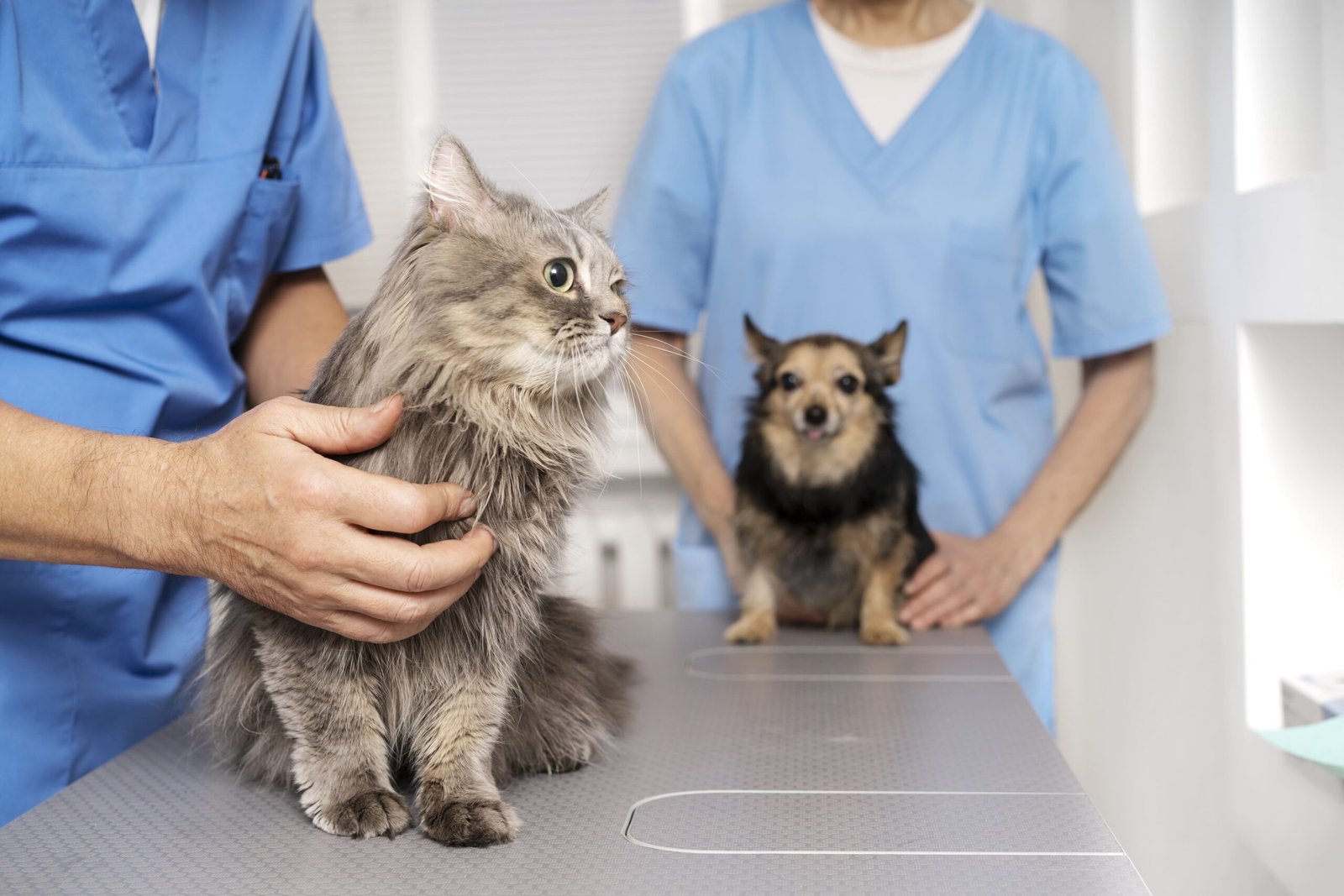
Pets are not just companions; they are family. When they experience an injury, undergo surgery, or face mobility issues, their recovery process is just as important as ours. Pet rehabilitation is an essential aspect of ensuring that your furry friend returns to their normal self, free from pain and with restored function. In this article, we’ll explore what pet rehabilitation is, why it matters for recovery, and the different therapies that can aid in their healing process.
What is Pet Rehabilitation?
Pet rehabilitation is a therapeutic approach designed to help pets recover from injuries, surgery, or illness by restoring their function and mobility. Just like humans, pets can experience long-lasting effects from surgery, injuries, or age-related conditions that affect their ability to move and live comfortably. Rehabilitation is critical to ensuring that pets recover fully, maintain their quality of life, and reduce the risk of future health complications.
The process involves a combination of physical therapy, hydrotherapy, massage therapy, and even acupuncture to address a variety of issues. A professional rehabilitation specialist will customize a treatment plan specific to the pet’s condition, aiming to improve movement, reduce pain, and promote healing.
Rehabilitation Therapies for Pets:
- Physical Therapy: This may include exercises and stretches to help regain strength and mobility.
- Hydrotherapy: Utilizing water to help reduce the impact on joints while providing resistance for muscle recovery.
- Massage Therapy: Helps to improve circulation, reduce muscle tension, and promote relaxation.
- Acupuncture: Can assist with managing pain and improving circulation.
Why Pet Rehabilitation Matters for Recovery
Pet rehabilitation plays a pivotal role in ensuring that pets recover effectively after surgery or injury. Here’s why rehabilitation is so crucial for their healing:
1. Enhances the Healing Process
Rehabilitation speeds up recovery by promoting circulation, reducing inflammation, and stimulating the muscles. The therapies involved in rehabilitation help address the root causes of discomfort and promote quicker healing.
2. Prevents Further Injury
Many pets, especially older ones, are at risk of further injury after surgery or an injury. Rehabilitation can help restore strength, balance, and mobility, lowering the likelihood of re-injury by strengthening the muscles and joints that support the body.
3. Improves Mobility and Quality of Life
For pets that suffer from reduced mobility due to surgery or injury, rehabilitation is essential in restoring their ability to move comfortably. This is especially important for dogs and cats that may face challenges in walking, running, or playing, as it directly impacts their quality of life.
4. Early Intervention is Key
Starting rehabilitation early can significantly reduce pain, improve flexibility, and prevent the onset of muscle atrophy. Early intervention can also help reduce the overall length of recovery time, which is critical for both the pet and the pet owner.
Types of Pet Rehabilitation Treatments
Rehabilitation for pets can take many forms, each aimed at addressing specific needs. Let’s explore some of the most common therapies used in pet rehab:
1. Physical Therapy for Pets
Physical therapy is a cornerstone of pet rehabilitation. It includes a variety of exercises and manual therapies to help strengthen muscles, improve flexibility, and restore mobility. Common physical therapy treatments include:
- Range of motion exercises to prevent stiffness.
- Strengthening exercises to build muscle and improve function.
- Manual manipulation to address joint issues.
2. Hydrotherapy for Pets
Hydrotherapy, or water therapy, is incredibly beneficial for pets with joint pain, arthritis, or post-surgery recovery. The buoyancy of water reduces pressure on the joints while providing resistance to help strengthen muscles. This makes hydrotherapy ideal for pets who cannot tolerate traditional weight-bearing exercises.
- Water treadmill sessions are commonly used for pets that need to rebuild strength and stamina.
- Swimming can also help pets regain muscle mass without putting undue stress on their joints.
3. Massage Therapy for Pets
Massage therapy is often overlooked but incredibly effective for pets in rehabilitation. It aids in improving circulation, reducing muscle tension, and decreasing pain. Additionally, it can help pets relax and reduce stress, which is important during recovery.
- Swedish massage techniques can help reduce tension.
- Trigger point therapy can relieve discomfort in specific muscle groups.
4. Acupuncture
Acupuncture can be beneficial in managing pain and inflammation, making it a great option for pets recovering from surgery or injury. This alternative treatment involves inserting small needles into specific points on the body to promote healing and alleviate pain.
- Acupuncture can help with chronic pain management, such as that caused by arthritis or old injuries.
Signs That Your Pet Might Need Rehabilitation
So, how do you know if your pet could benefit from rehabilitation? Here are some signs that indicate your pet may need a rehabilitation plan:
1. After Surgery
If your pet has recently undergone surgery, rehabilitation can help speed up recovery and prevent complications such as stiffness or muscle atrophy.
2. Post-Injury Recovery
Injuries like fractures, ligament tears, or sprains can significantly impact your pet’s mobility. Rehabilitation helps restore function, strength, and flexibility.
3. Age-Related Mobility Issues
Older pets often face issues such as arthritis, joint pain, and reduced mobility. Rehabilitation can help manage pain and improve movement in senior pets.
4. Reduced Mobility or Discomfort
If your pet is showing signs of limping, avoiding certain activities, or showing signs of pain when moving, rehabilitation could be beneficial.
The Role of a Rehabilitation Specialist
A certified pet rehabilitation specialist is trained to assess your pet’s needs and create a personalized rehabilitation plan. These professionals have experience in various therapeutic techniques and will work closely with your veterinarian to ensure the best possible recovery for your pet. They monitor progress and adjust treatments as necessary to meet your pet’s unique needs.
How to Support Your Pet During Rehabilitation
As a pet owner, you can play an important role in supporting your pet’s recovery at home. Here are some ways to help:
1. At-Home Exercises
Your specialist may provide you with a set of exercises to do with your pet at home. These exercises are designed to complement the professional treatments your pet is receiving.
2. Comfort and Rest
Make sure your pet has a quiet, comfortable space to rest and recover. Soft bedding and easy access to food and water can make a big difference in their recovery.
3. Proper Diet
A nutritious diet can support the healing process. Your veterinarian may recommend specific foods or supplements to boost your pet’s recovery, particularly those rich in joint-supporting nutrients like glucosamine and omega-3 fatty acids.
Conclusion
Pet rehabilitation is a vital aspect of ensuring your pet makes a full recovery after surgery, injury, or illness. It offers numerous benefits, from pain management to improving mobility, ultimately helping your pet regain their quality of life. If your pet is recovering from an injury or surgery, it’s essential to consult with a veterinarian or rehabilitation specialist to explore available therapy options.
The earlier rehabilitation is started, the better the chances for a quicker, more complete recovery. Don’t hesitate to seek professional help for your pet’s healing journey.
Frequently Asked Questions (FAQs)
1. What is the purpose of pet rehabilitation?
Pet rehabilitation aims to help pets recover their mobility and strength after surgery, injury, or illness. It also reduces pain and prevents further complications.
2. When should I start pet rehabilitation?
It’s best to start pet rehabilitation as soon as possible after surgery or injury, preferably under the guidance of a veterinarian or rehabilitation specialist.
3. Is hydrotherapy safe for my pet?
Yes, hydrotherapy is safe for most pets. It is a low-impact exercise that helps strengthen muscles while reducing stress on joints.
4. How long does pet rehabilitation take?
The duration of rehabilitation depends on your pet’s condition, the type of injury or surgery, and the type of therapy involved. It can range from a few weeks to several months.
5. Can pet rehabilitation help older pets?
Absolutely. Pet rehabilitation can greatly benefit senior pets, especially those with arthritis or other mobility issues, by improving joint function and reducing pain.
6. Can I perform rehabilitation exercises at home?
Yes, many rehabilitation exercises can be done at home, but it’s essential to follow the guidance of a professional to ensure the exercises are safe and effective for your pet’s condition.

